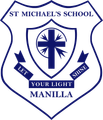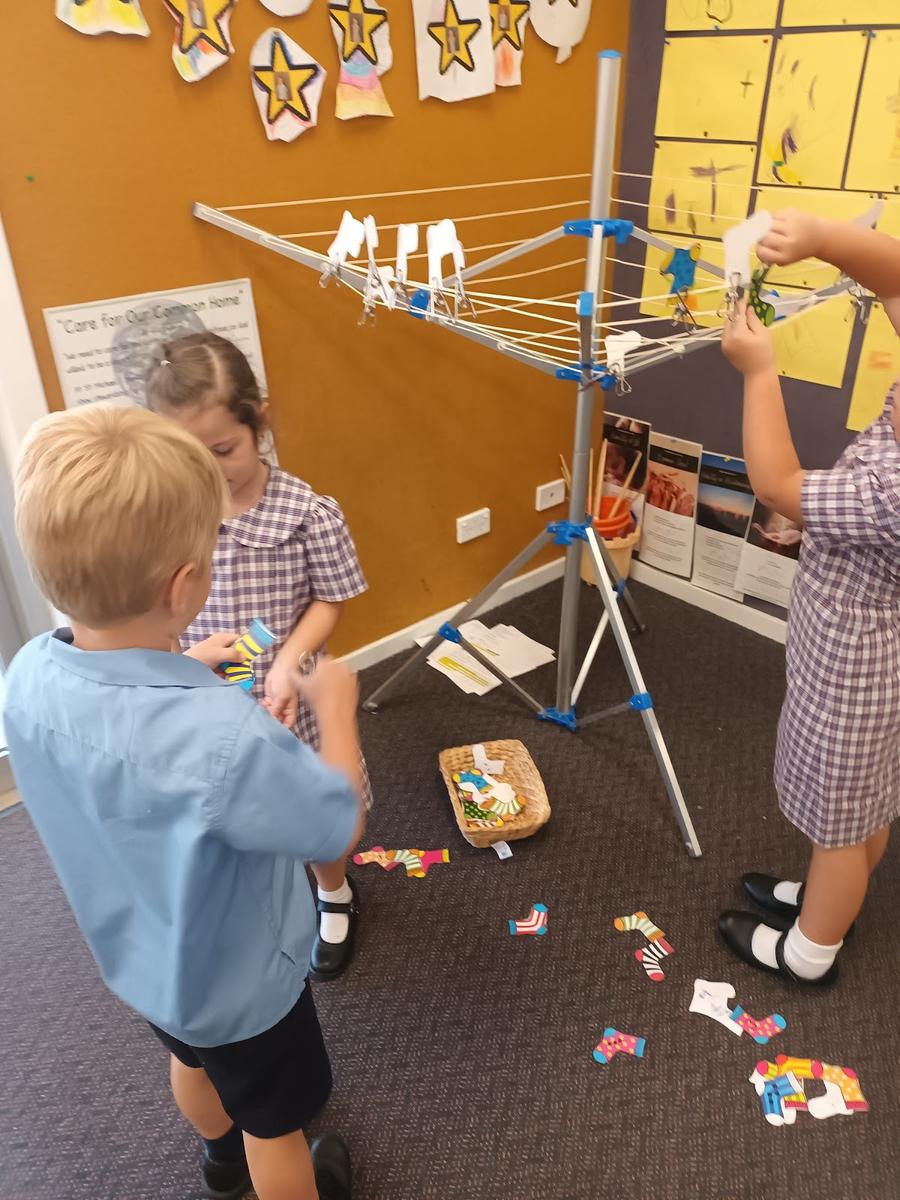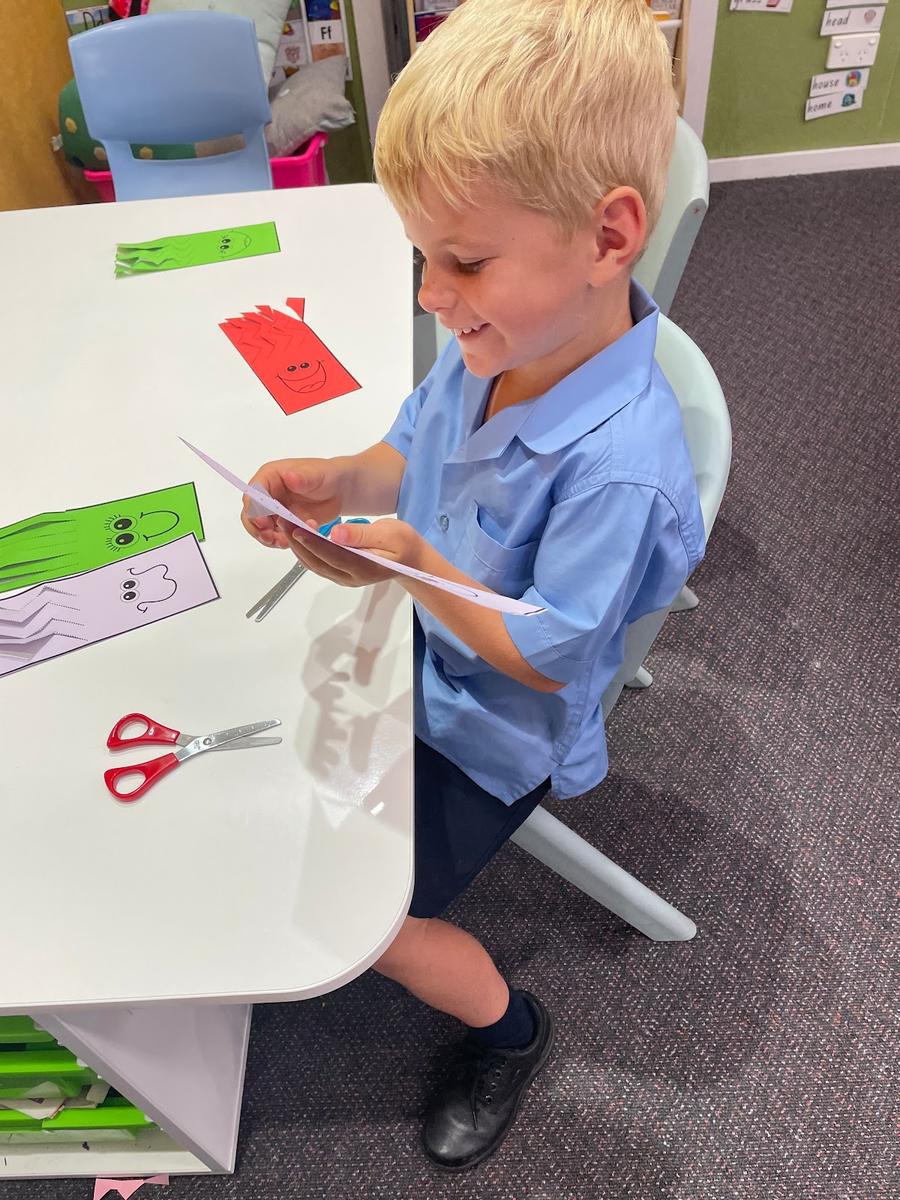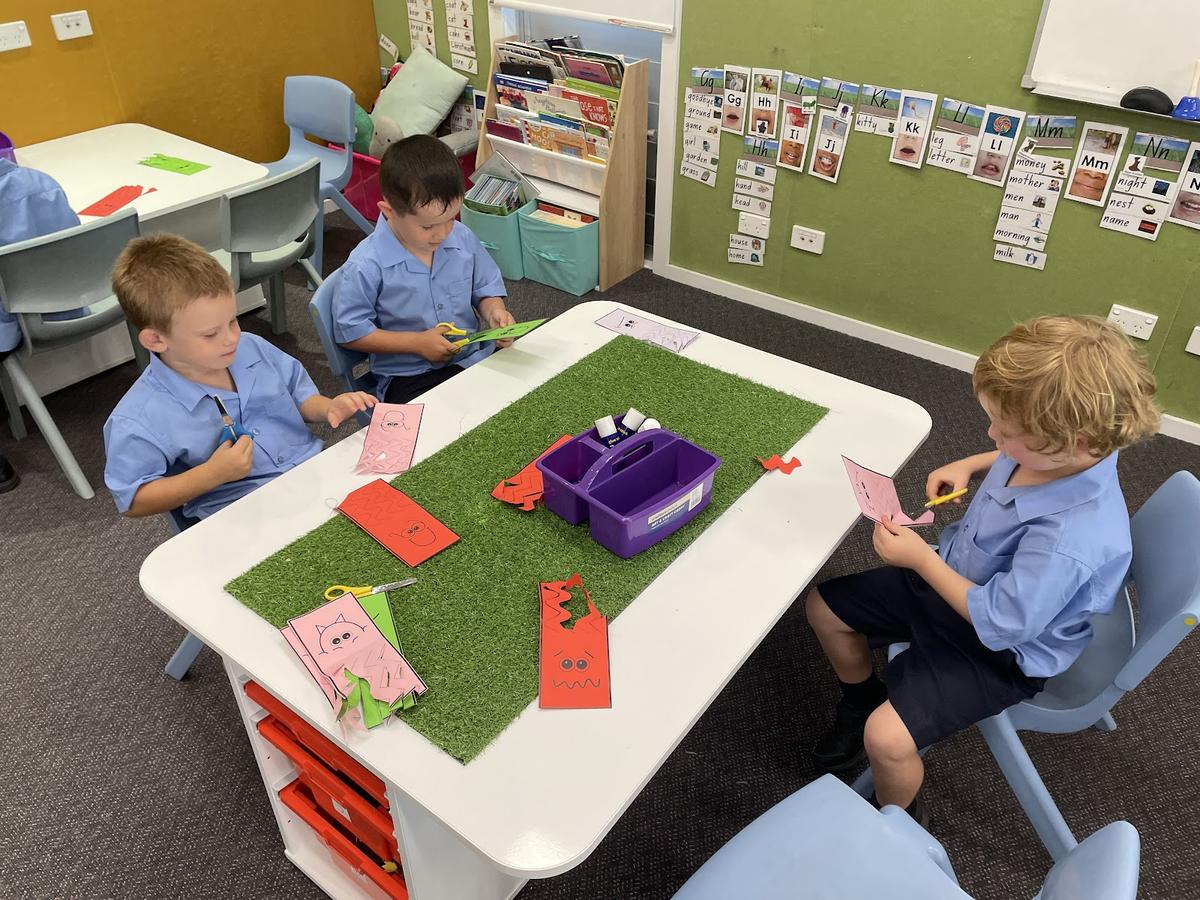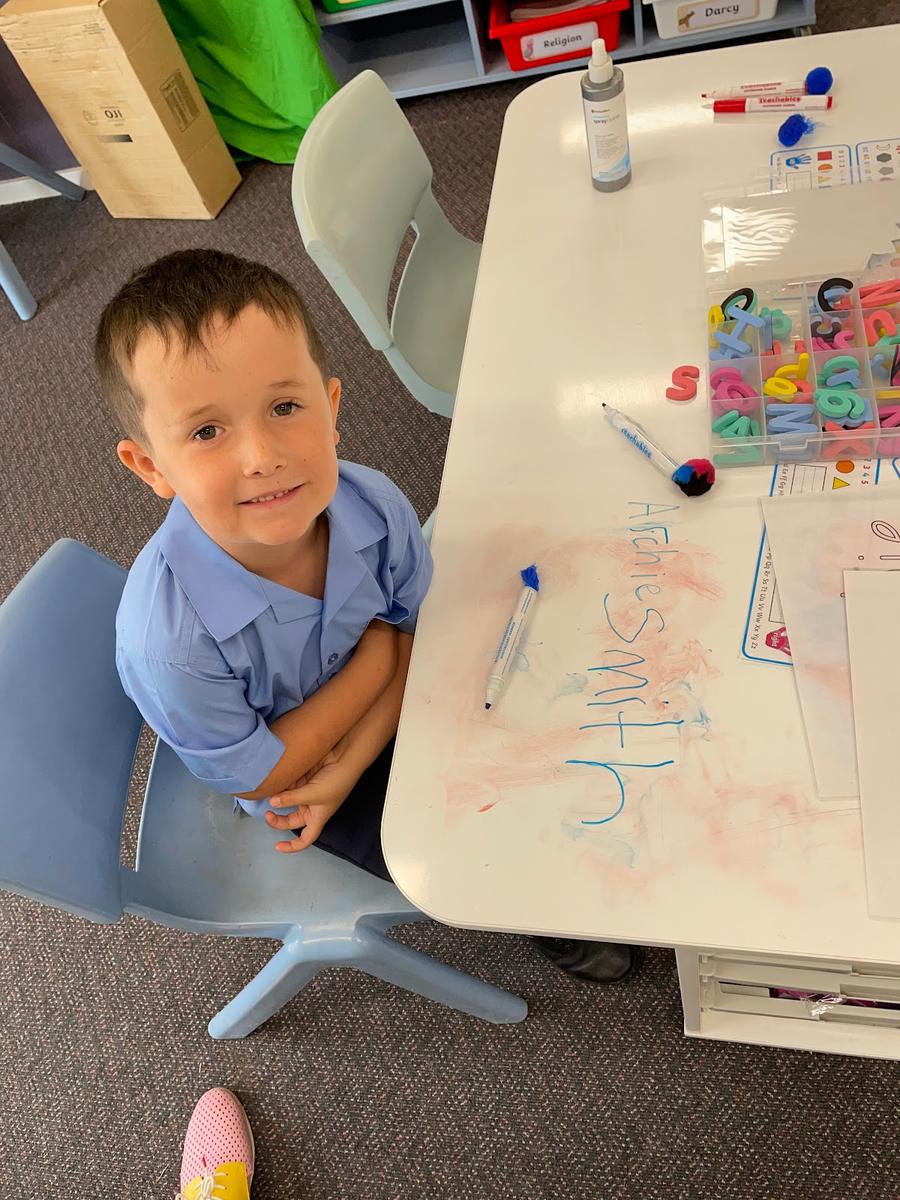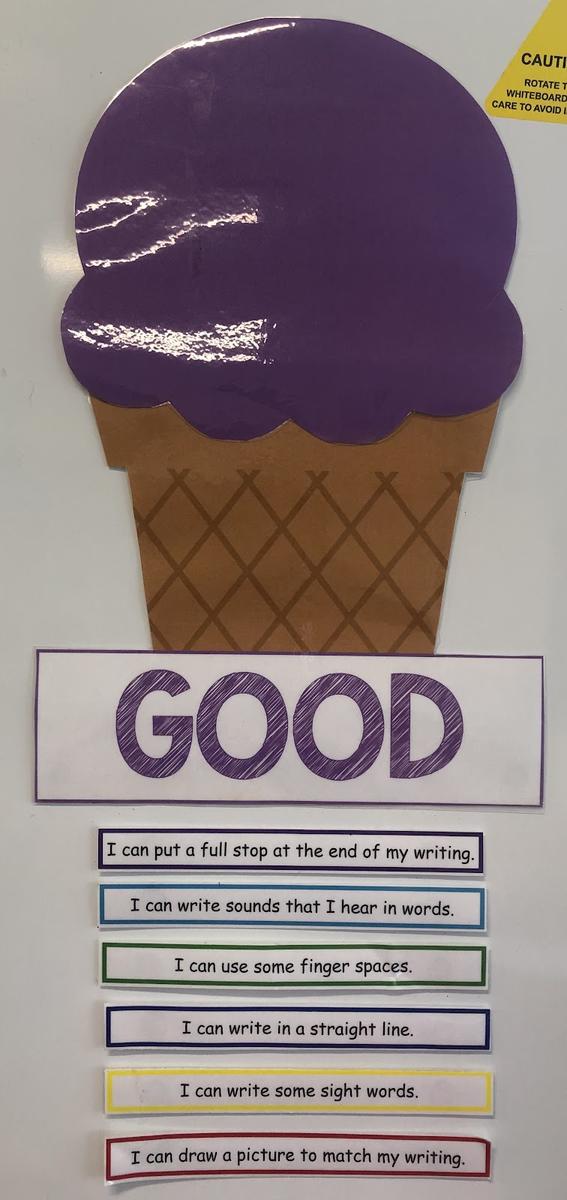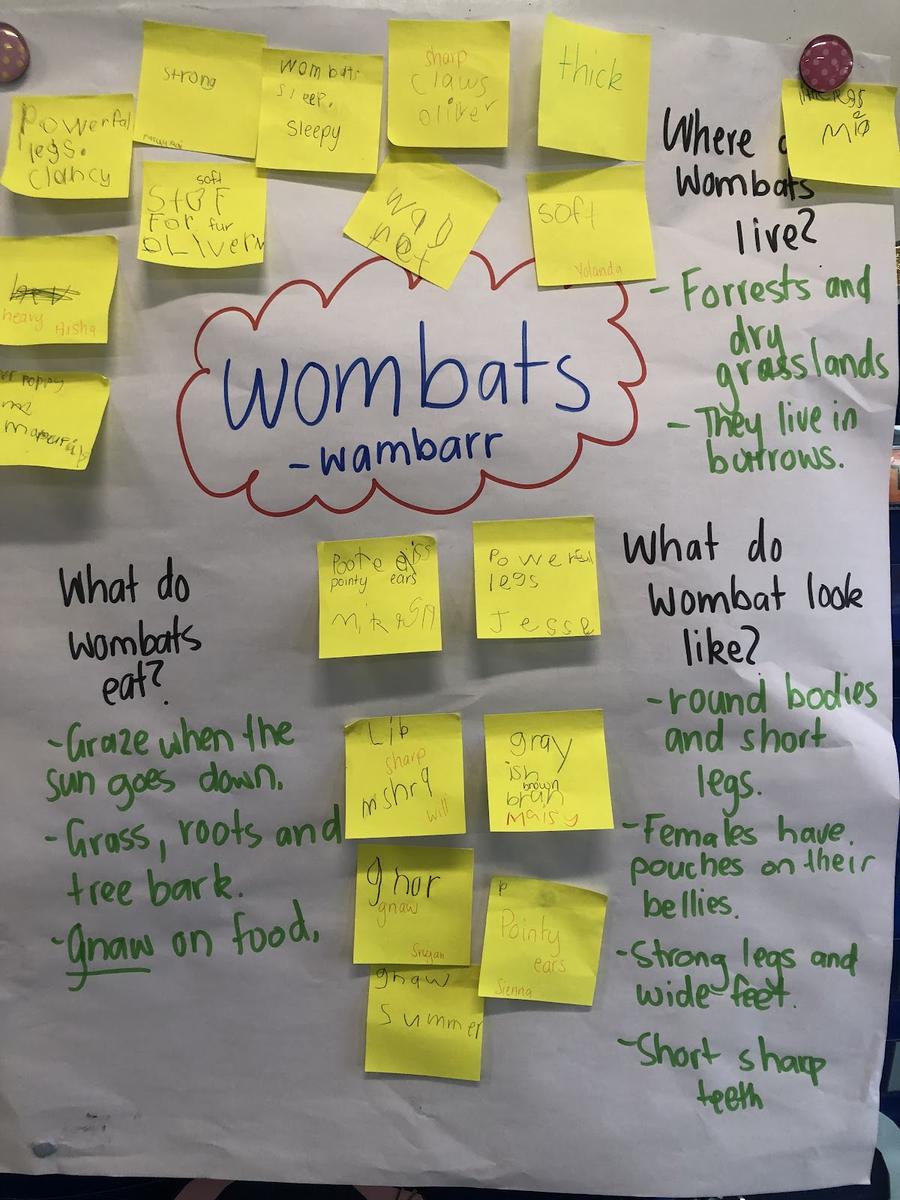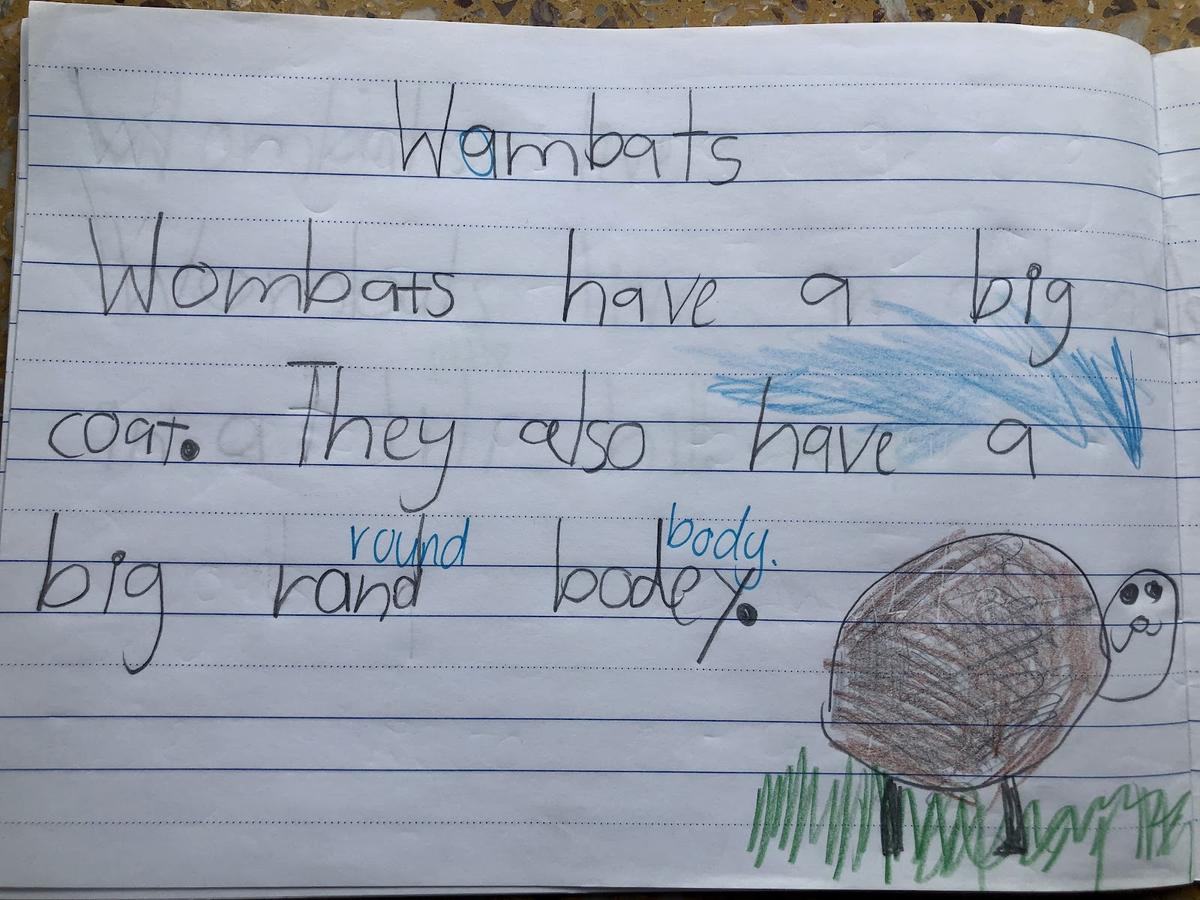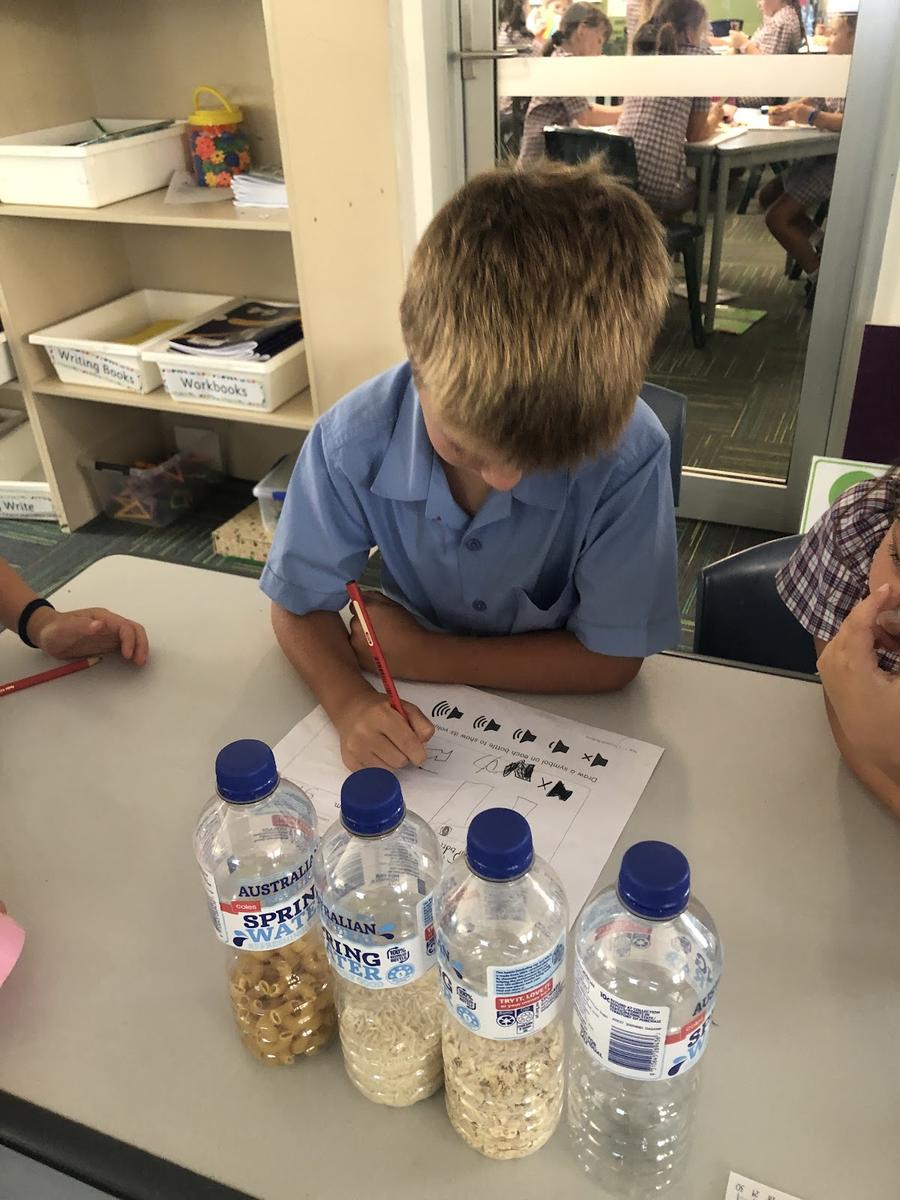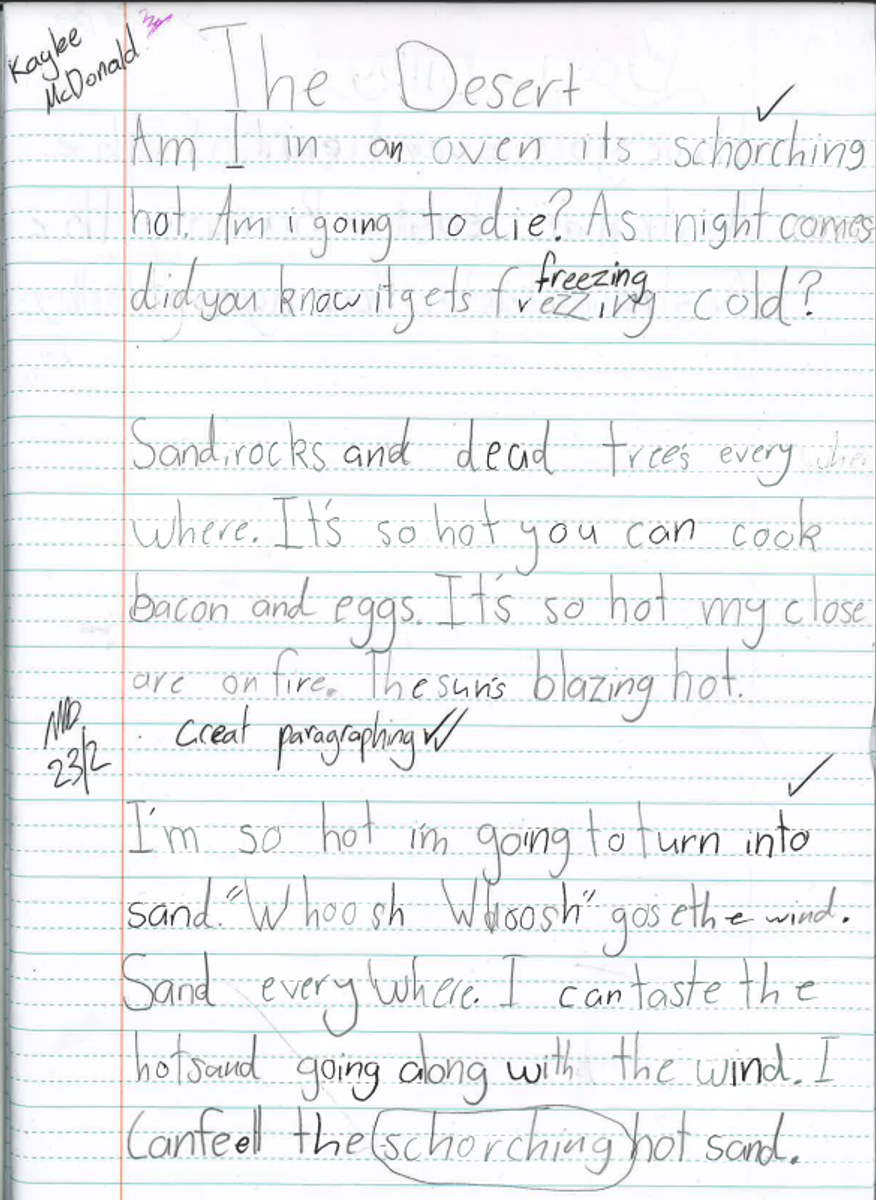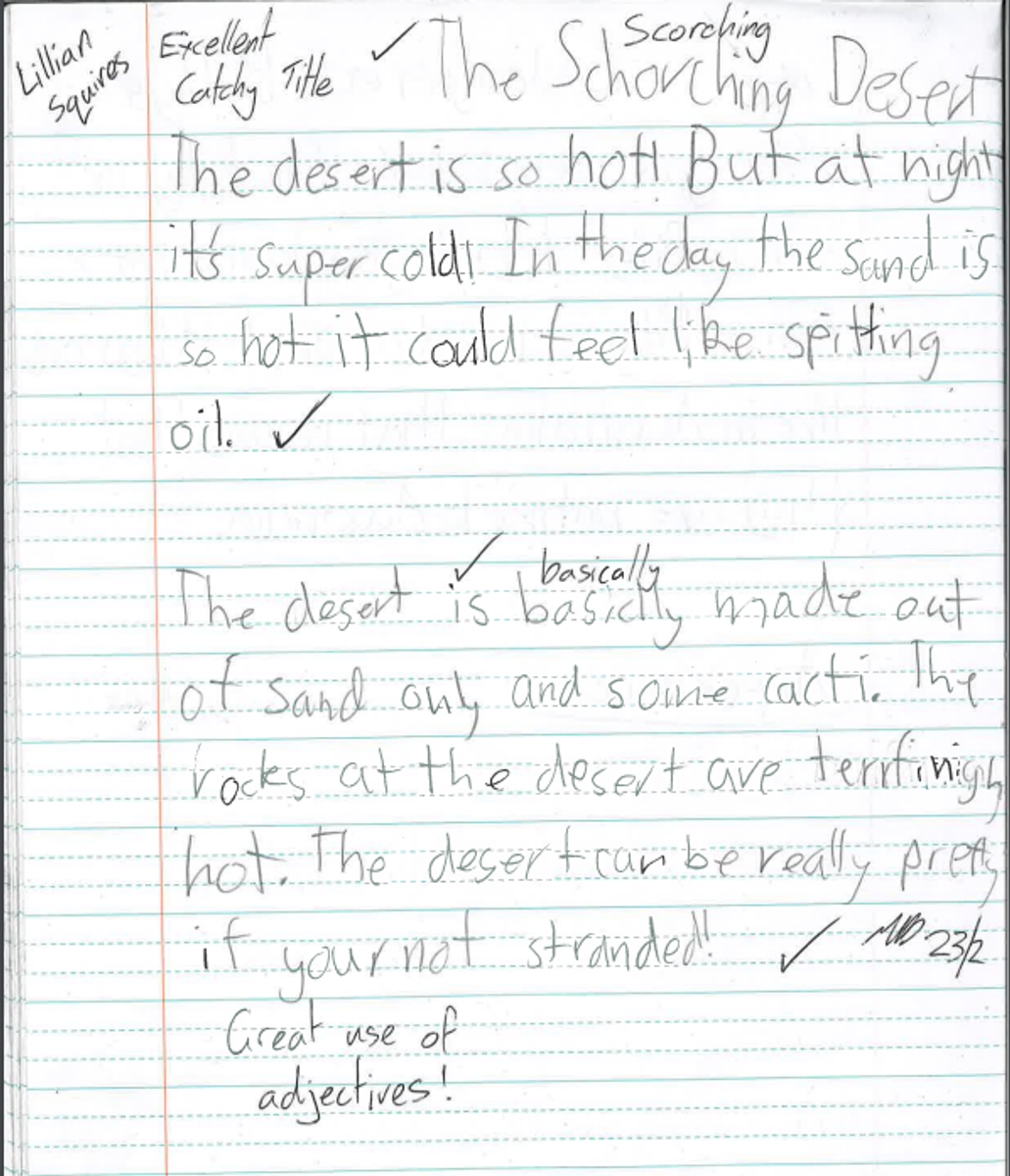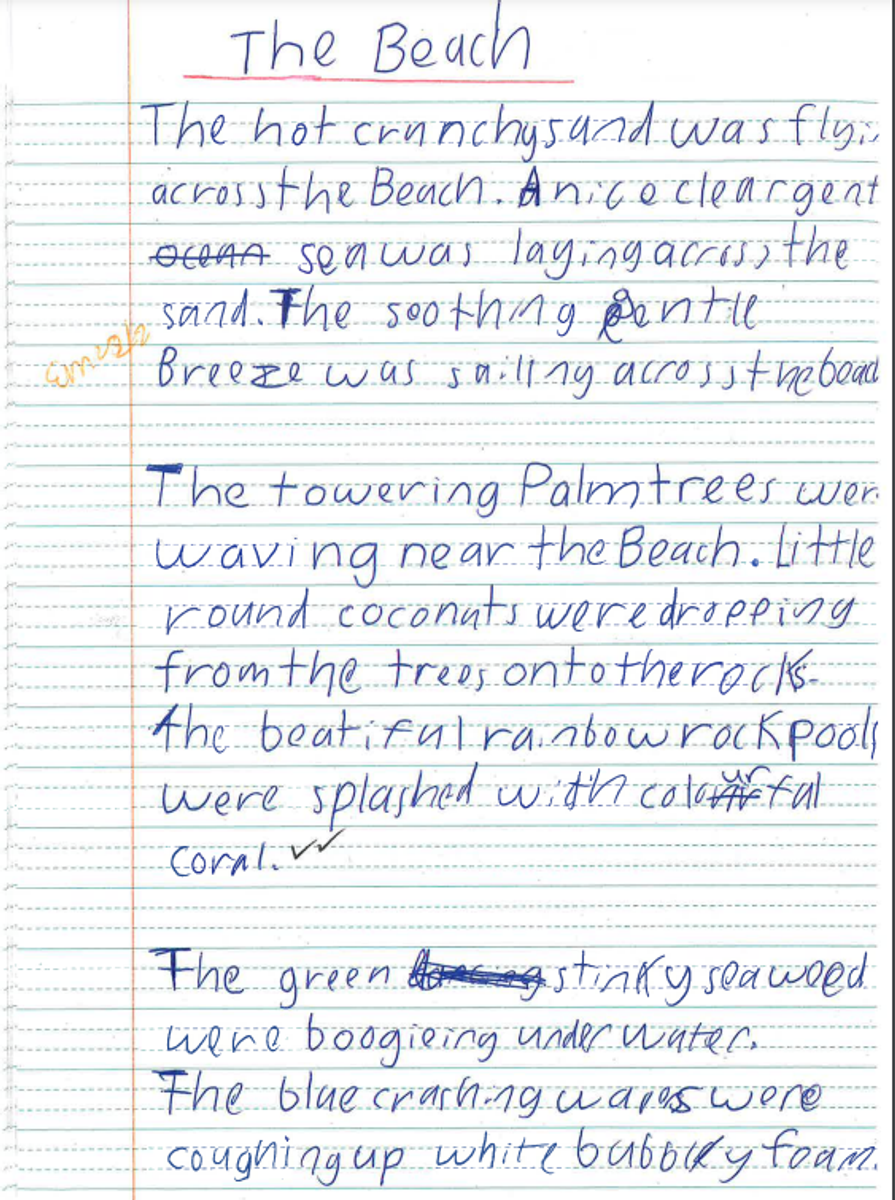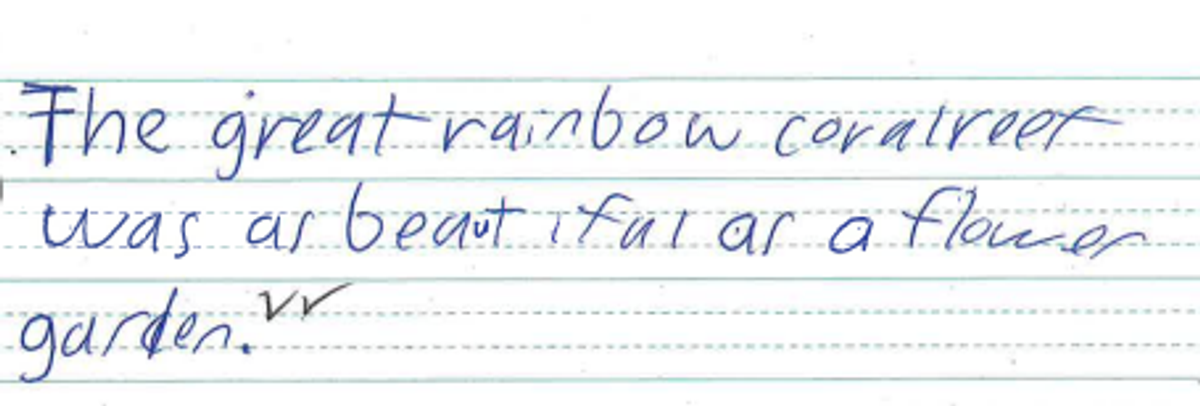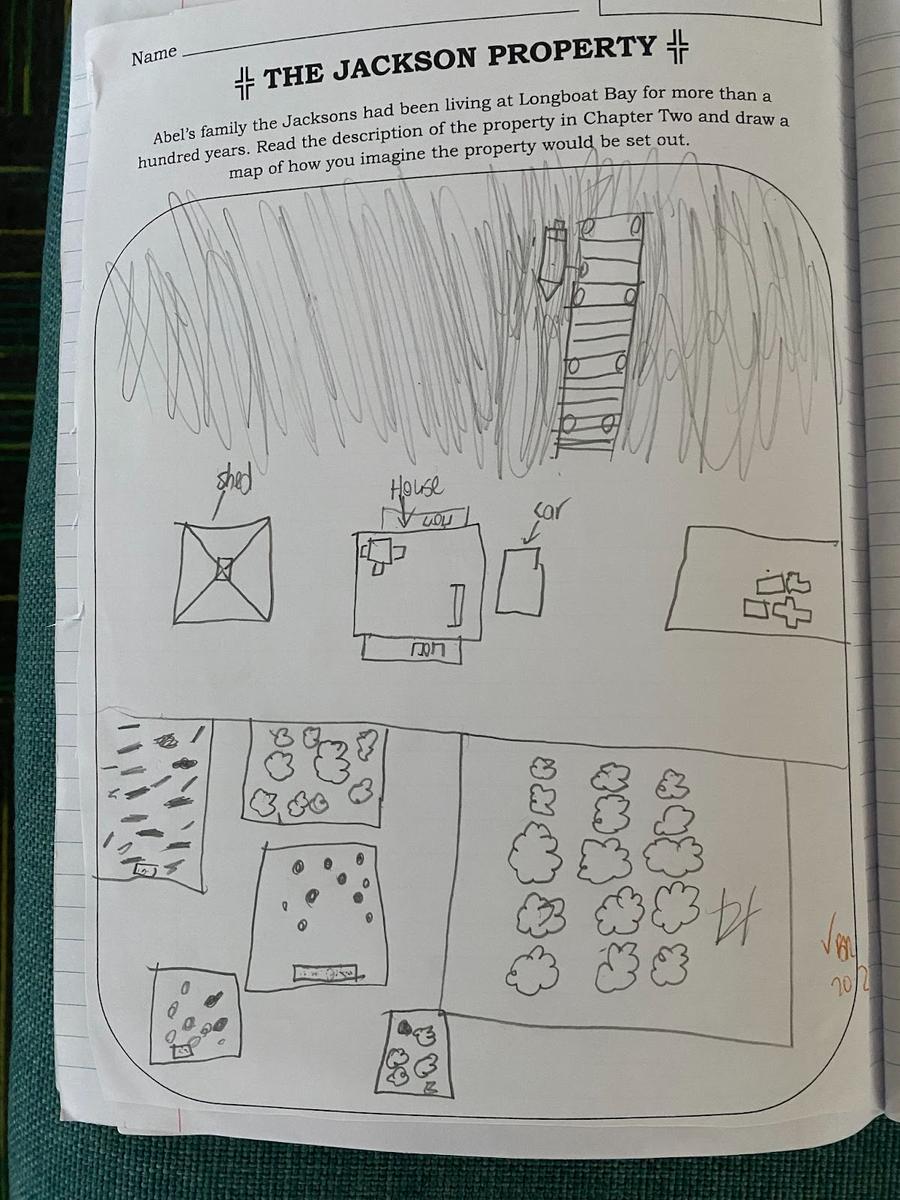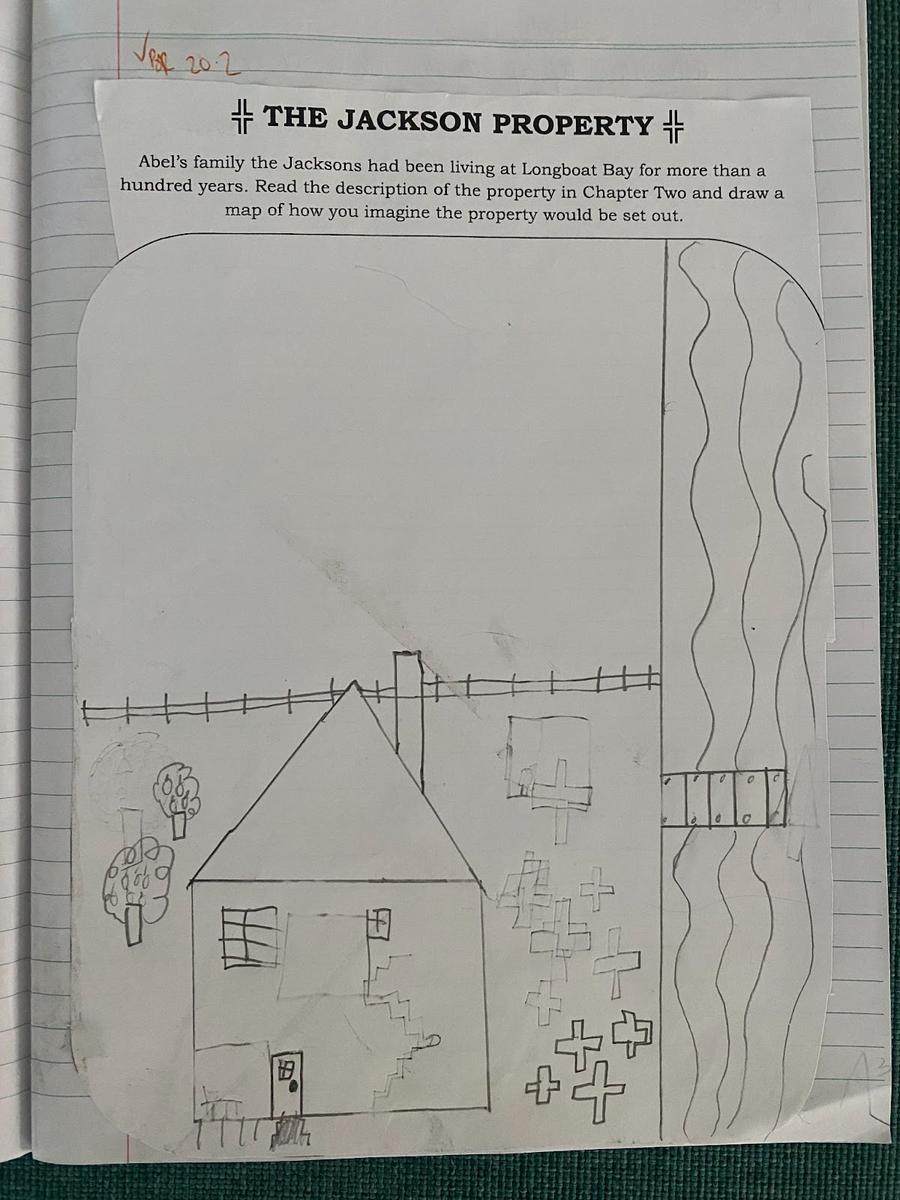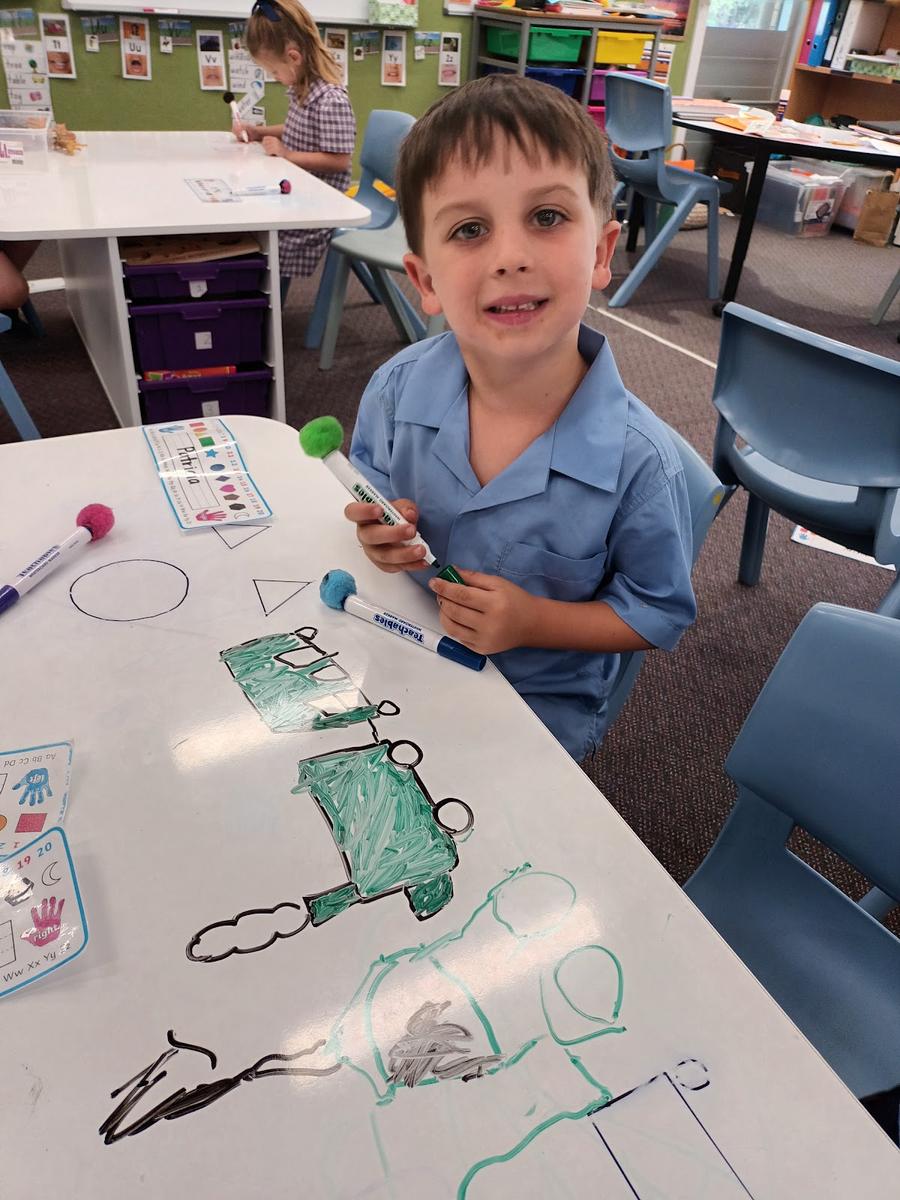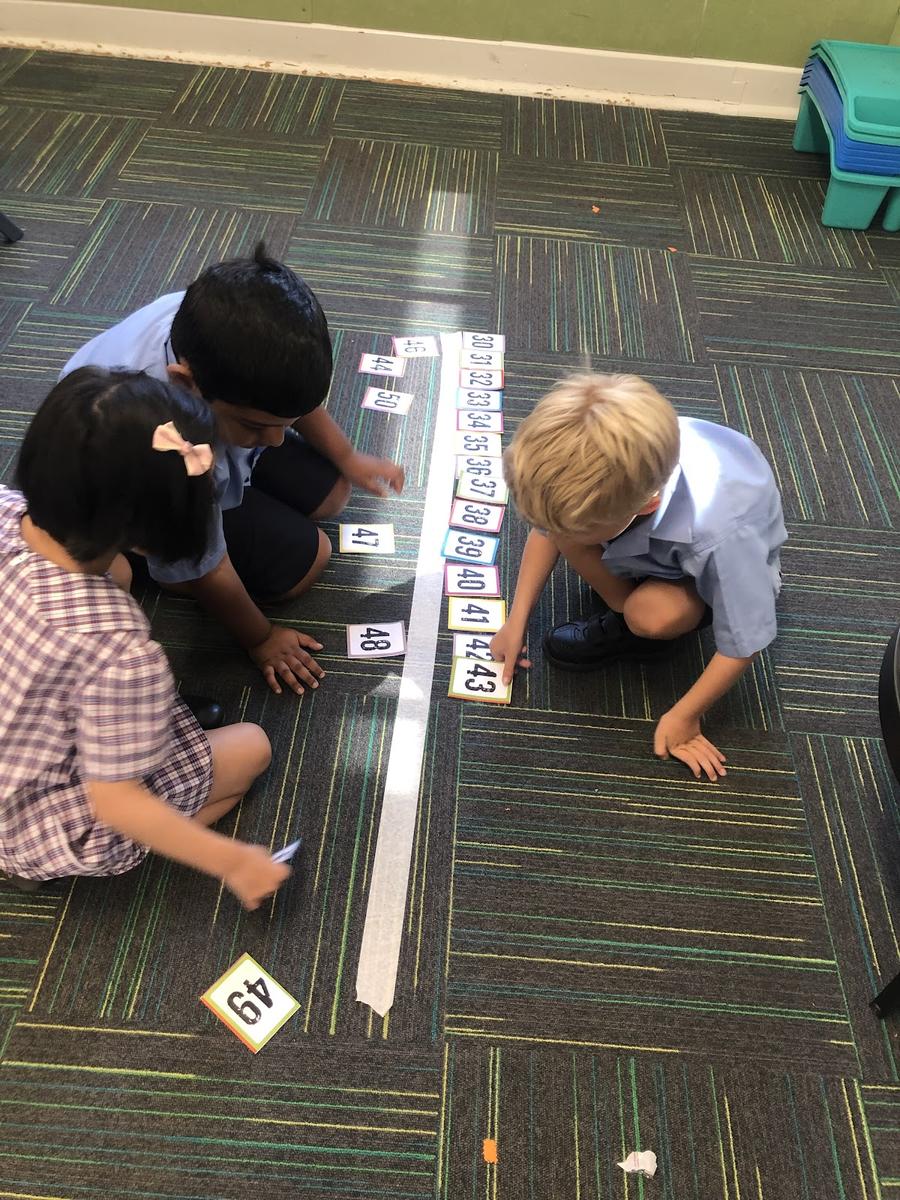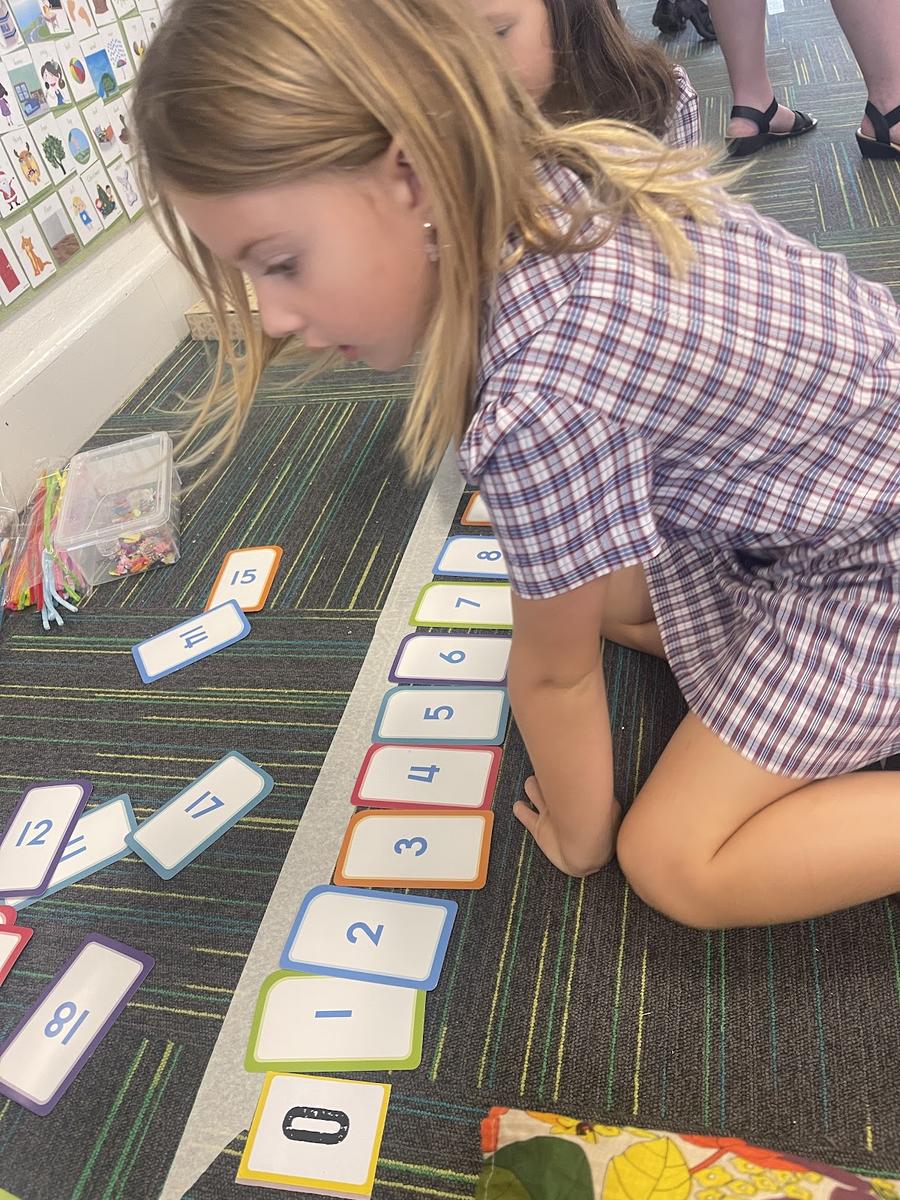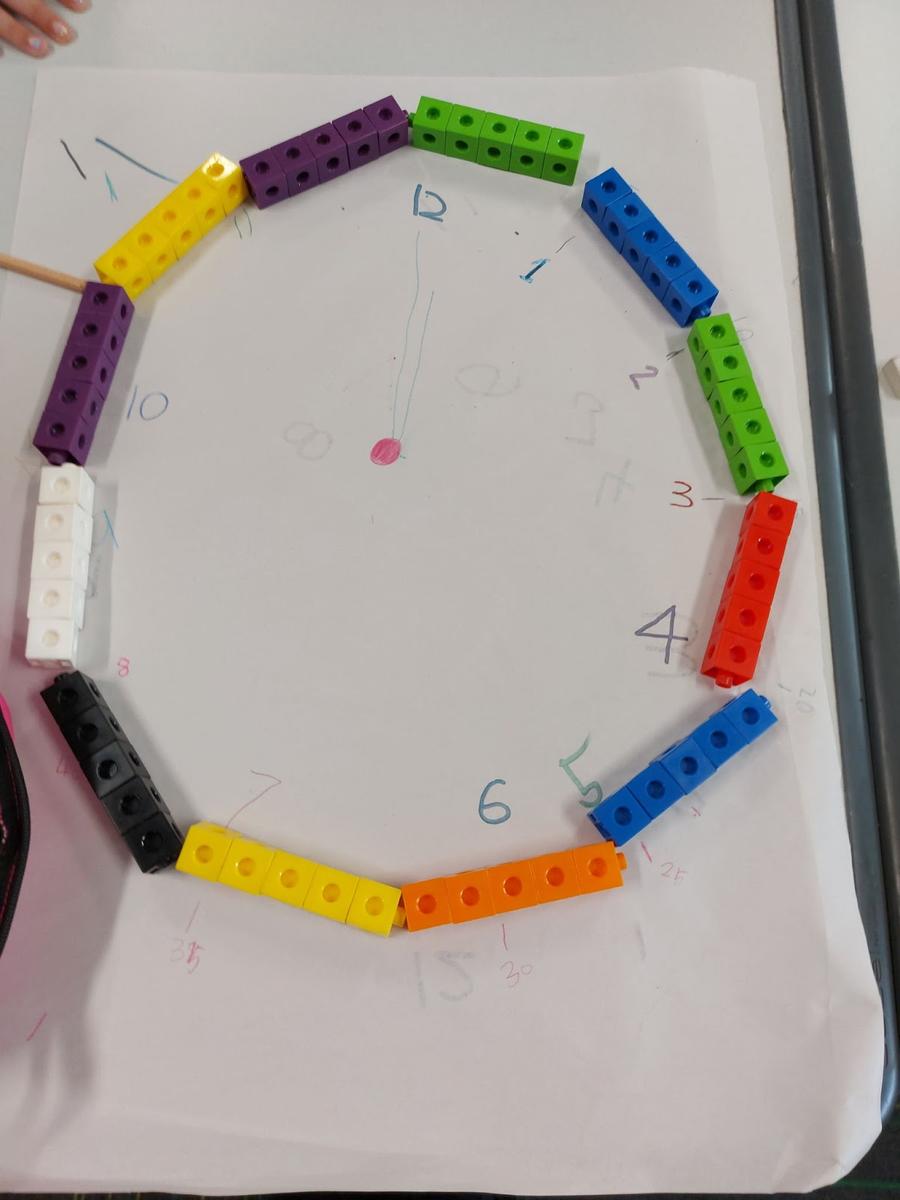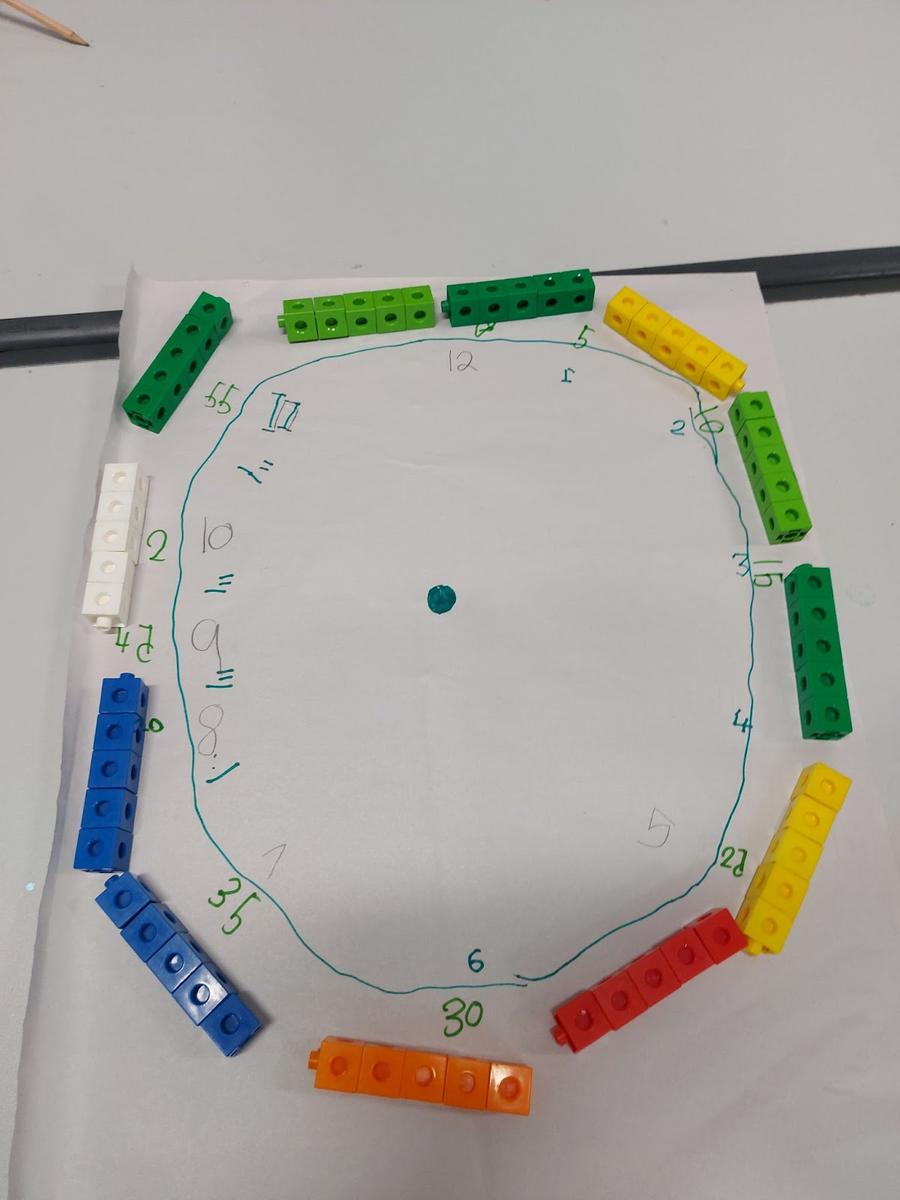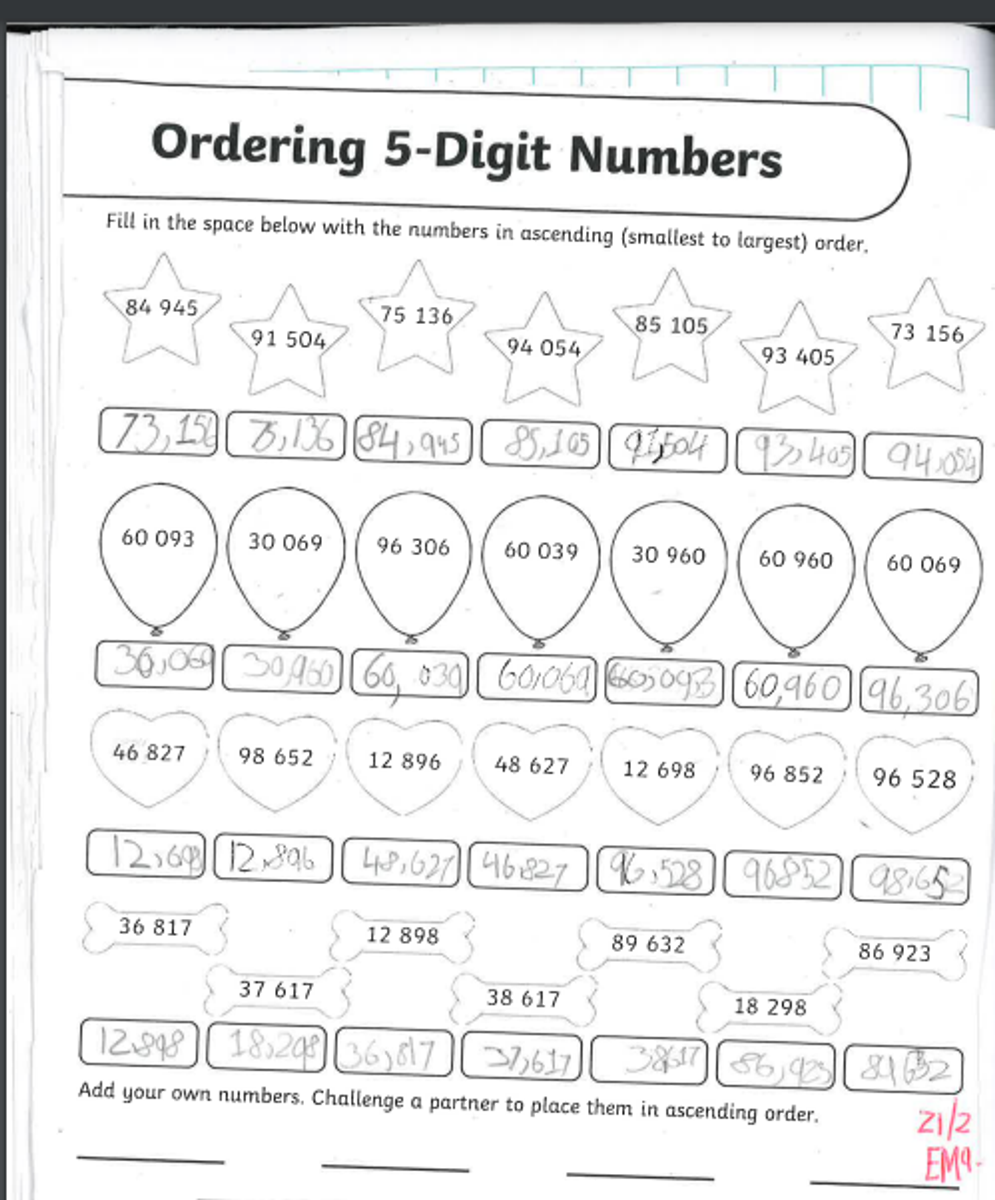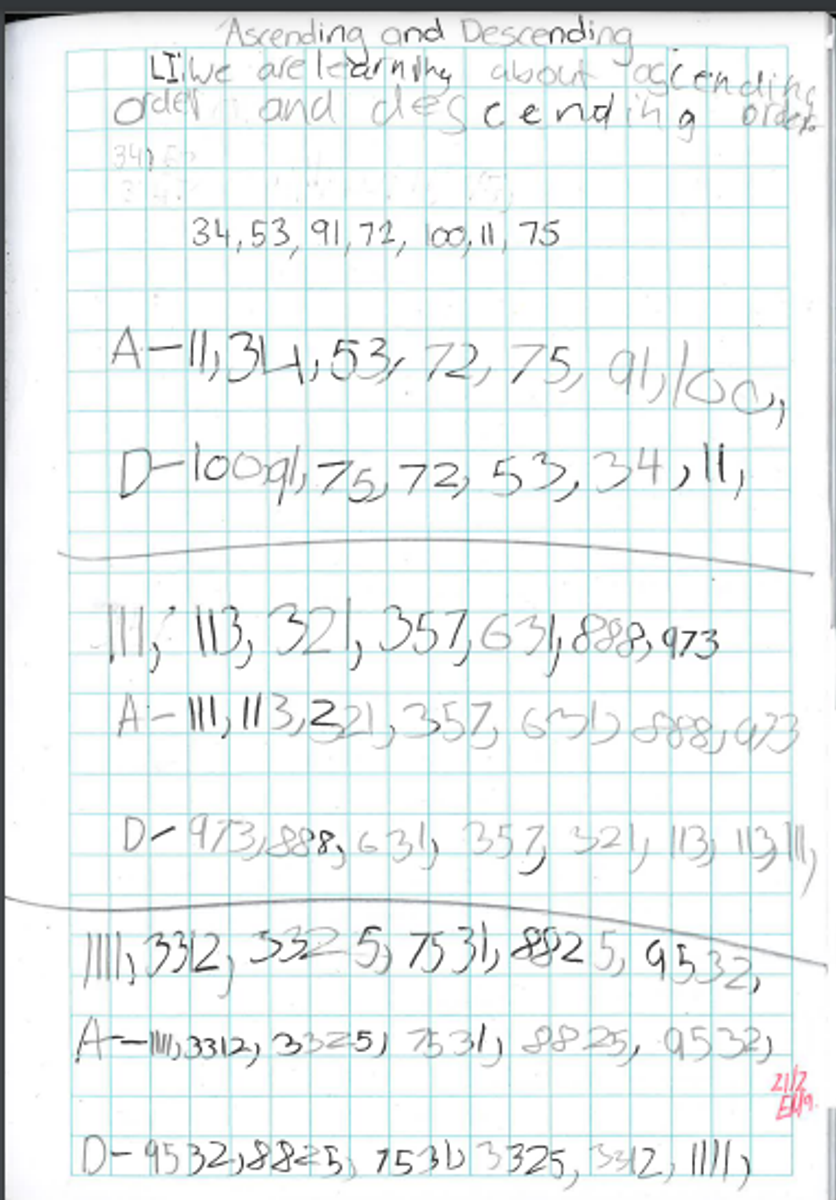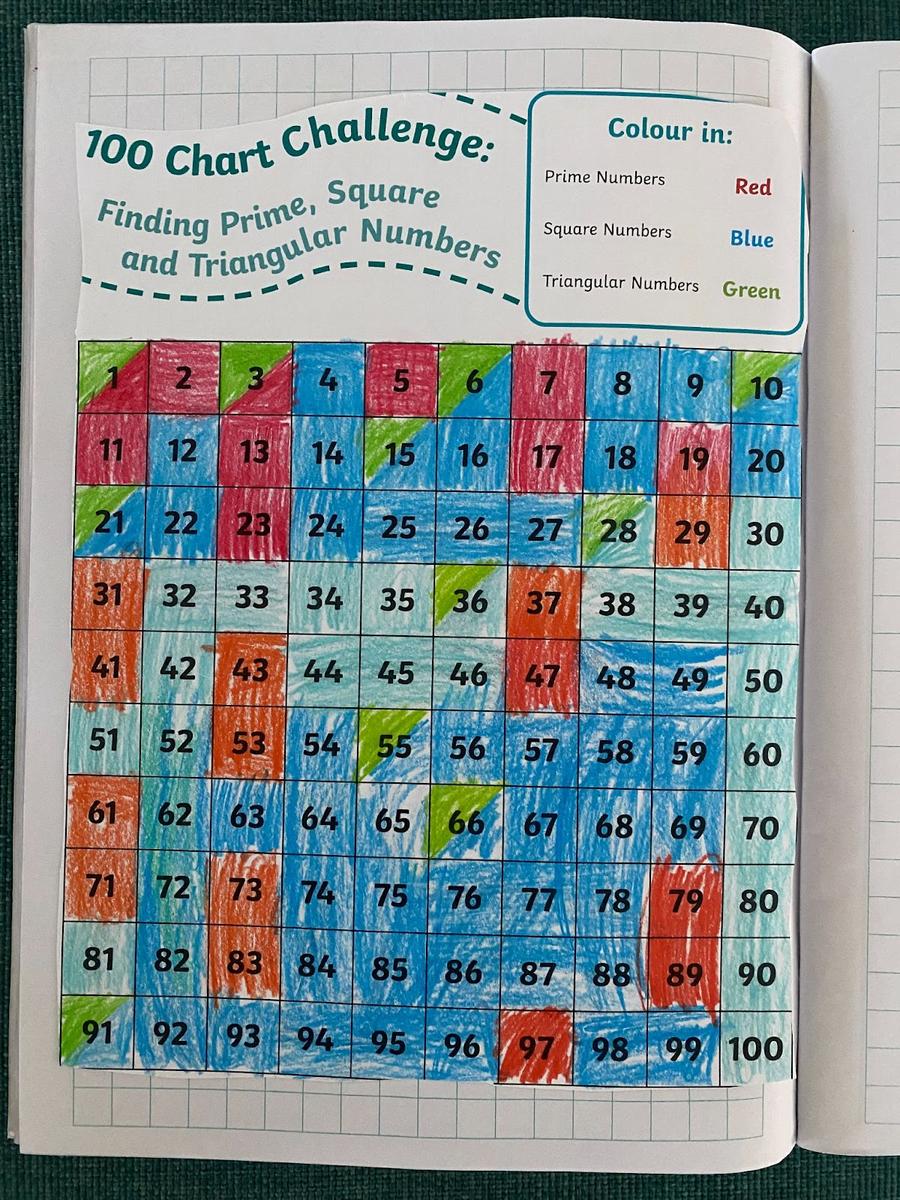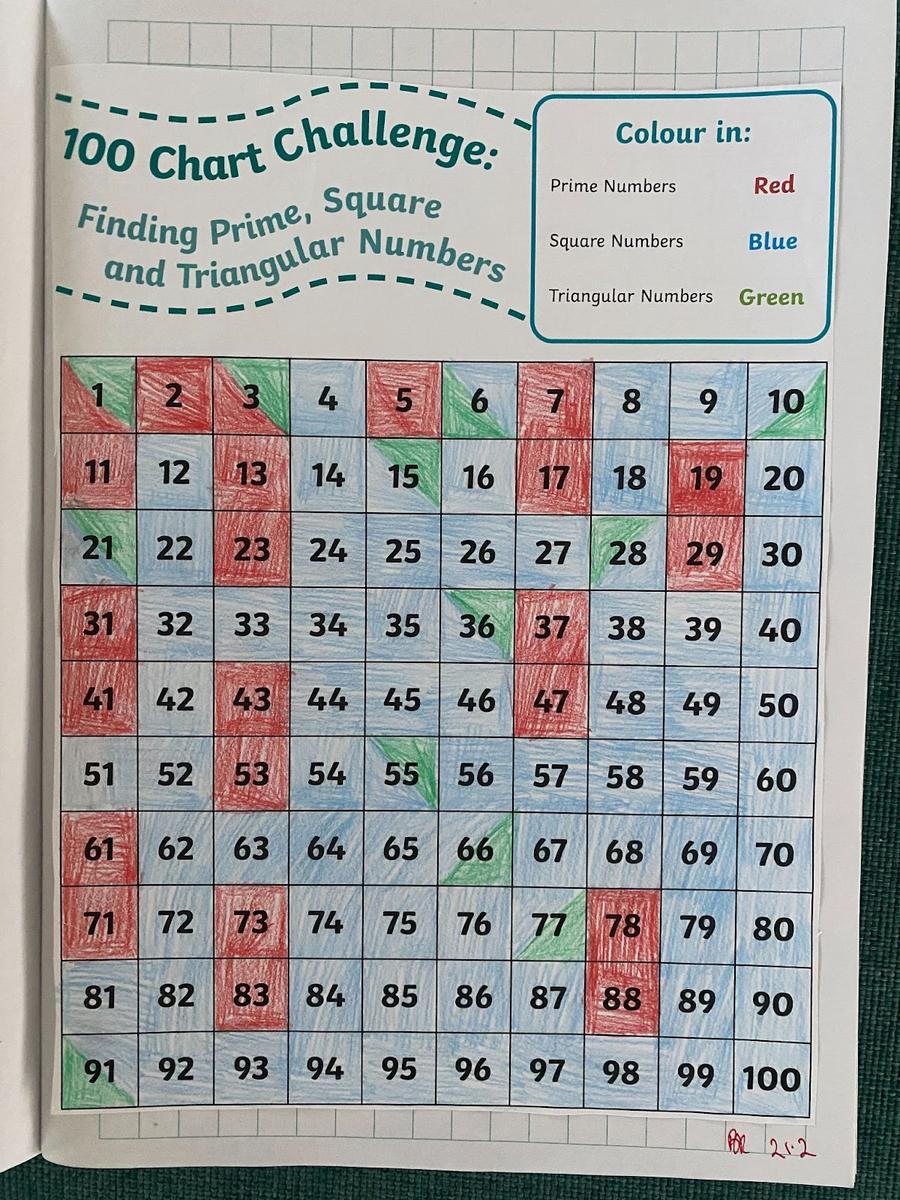Learning News

Learning News Weeks 5 and 6, Term 1
Literacy News
Kindergarten
For the first few weeks of school, Kindergarten have been engaging in different fun, play-based learning activities. We have particularly been focusing on developing our fine motor skills to support our pre-writing. These activities include cutting, pegging, completing puzzles, playdough and games. We have been identifying the different letters in our names and practicing writing our names. Great work Kindergarten!
Year 1
This term, Year 1 have been focusing on writing ‘good’ sentences. They were introduced to the success criteria for the ‘Good Ice Cream’. Year 1 have been trying very hard to use capital letters and full stops in the right spots, use finger spaces between their words, stretch out tricky words, use sight words on the walls, and write in a straight line. The topic for this week's writing was wombats and they have learnt some very interesting facts.
Maisy Armytage’s Good Sentences
Year 1 have also been learning how to record the volume of sound. They had to work in small teams to shake bottles filled with air, oats, rice and pasta to order them from softest to loudest. They learnt that we can record volume using different symbols.
Year 2/3
This week in Year 2/3 we started to look at writing a literary description. We built our understanding of a literary description by looking at an example text, discussing how to use our five senses and using descriptive language. The students then created their own written text on the topic of describing “The Desert”.
Year 4
This fortnight in Literacy, Year 4 has been learning about literary descriptions. Students have enjoyed gaining an understanding of the structure of this text type and can recognise the importance of using descriptive language in an imaginative way. They have begun writing their own literary descriptions using literary techniques such as personification, similes and metaphors. Great work Year 4!
Miss Maunder and Miss McDonald.
By Byrce Mitchell
Stage 3
Stage 3 has started reading a class novel, Blueback by Tim Winton. This week, our reading focus was on visualisation. As the teachers read the first 2 chapters of the novel, students used the descriptions to visualise a mental image of the characters and setting. Students drew their mental image of The Jackson Property and compared with their peers. Wonderful work Stage 3!
Numeracy News
Helping your child learn about shapes and objects:
- Read books to your child and talk about the shapes you can see within the pictures, eg ‘The roof on the house is a triangle'.
- Look for objects inside or outside the house that are shaped like a circle, triangle, rectangle or square. Look for different sized shapes and shapes in different positions.
- Involve your child in craft activities such as making your own gift wrapping by printing painted shapes onto paper using corks, empty cotton reels or sponges.
- Make shadows on the ground or on a wall using your body or hands and talk about the shapes.
- Fold paper to make a hat or boat and talk about the shapes made as you fold the paper.
- Collect scrap paper or used gift wrapping and encourage your child to cut and glue pieces to make a picture.
- Play ‘I spy' games and describe things by size and shape, eg "I spy with my little eye something that is big and shaped like a square".
- Make biscuits using cookie cutters or make pretend biscuits from modelling dough. Talk about the shape of each biscuit.
Counting tips:
- Count stairs, letter boxes,or objects in two, threes, fives and tens whenever opportunities arise;
- Put out the number of knives and forks needed for dinner and ask your child to count them in sets of two;
- Talk about numbers whenever opportunities arise. Ask questions such as “Which is bigger/smaller/the same/different?”, house numbers on long streets;
- Take note of larger numbers as they occur (e.g. house numbers, page numbers in books).
- Encourage your child to read the numbers and talk about other ways they could have been written.
- Talk about the order in which you complete everyday activities such as preparing a meal, setting the table. Use words such as first, next, last, third, to describe the sequence of actions.
- Give your child directions using the language of order eg “First put the rubbish in the bin and then go and do your homework”.
- Ask your child to arrange objects in order, eg the family’s shoes. Talk about the order using words like first, second, third, last.
Kindergarten
This week we have been learning about 2-D Shapes. We have been learning shape names and have been describing features of shapes. We have been using play-based activities to encourage the children to investigate shapes and compare features. One of our favourite activities was playing 'Mr Squiggle', where the students had to turn pre-drawn shapes on the whiteboard tables into a new picture. Impressive work Kindergarten!
Year 1
This week Year 1 started their ‘Number’ unit and have been working hard to read, count and order numbers to 100. Students have learnt to find the number before and after a given number, count forwards and backwards from different numbers, and completed a tricky hundred chart puzzle to put all the numbers back together. Their favourite activity was creating physical number tracks and seeing how fast they could order their numbers. Excellent counting and teamwork this week Year 1! Miss Myers
Year 2/3
Year 2/3 have continued their journey in time by learning to read the time on digital and analogue clocks. We have learnt that on an analogue clock the small hand is the hour hand and the longer hand is the minute hand. In groups we build our own clock using paper, texters and connector blocks. Fantastic work Year 2/3! Mr Beaumont
Year 4
This week in Numeracy, Year 4 has begun their new unit on Whole Number. Students have been learning about place value, ascending and descending orders, rearranging numbers to create new numbers and partitioning. Wonderful work Year 4! Miss Maunder and Miss McDonald.
Stage 3
Stage 3 has been learning to identify and describe the properties of prime, composite and triangular numbers. Students had to work through a hundreds chart, determining if each number was a prime, composite or triangular number and recording with different colours for each. This allowed students to observe what numbers fit into each category or if they fit into more than one category. Fantastic work Stage 3!
